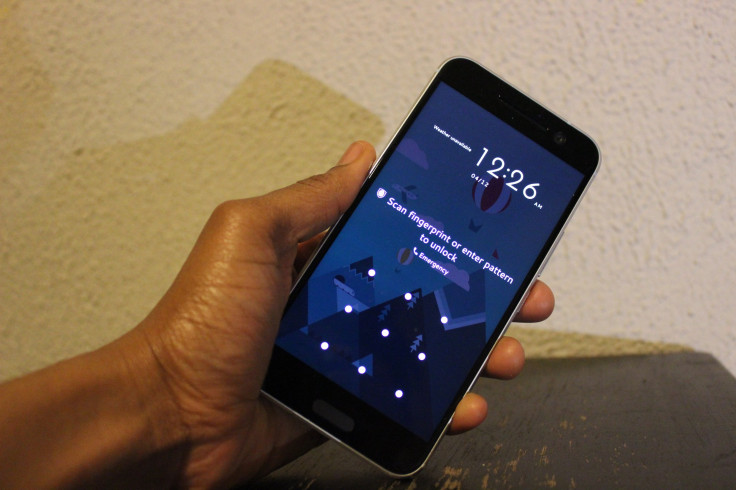Fingerprint scanners are a commonplace feature on many high-end smartphones today. At this time, manufacturers utilize two choices for placement of their fingerprint scanners: a front-facing sensor in the home button or a rear sensor embedded into the back panel.
The HTC 10 features a front-facing fingerprint scanner. In the past, HTC has used rear-facing fingerprint scanners, in devices such as the HTC One Max. However, when a manufacturer is trying to stuff a host of upgraded components into a standard sized slate smartphone, some compromises had to be made. HTC’s AVP of product planning, Nigel Newby-House, told iDigitalTimes at a recent press briefing that the HTC 10 has a front-facing fingerprint scanner so there would be room for the smartphone’s massive 3,000mAh battery.
“We wanted to get this 3,000mAh battery in here. If we would have put it in the back, we would have had to shave a little bit of size off the battery,” Newby-House told iDigi.
Between the three main 2016 flagships currently on the market, the HTC 10, the Samsung Galaxy S7 and the LG G5, the former two have front-facing fingerprint scanners. But that doesn’t mean that front-facing sensors reign supreme. Manufacturers like Huawei employ rear-facing fingerprint scanners for devices. The Nexus 6P, which is a 2015 flagship made by Huawei, includes a rear fingerprint scanner.
Many critics of the current 2016 flagships have rated the Nexus 6P as a superior device in many aspects, particularly its ability to use the fingerprint scanner to wake the device and authenticate to unlock at the same time. Luckily, the HTC 10 also has a similar feature, which allows the handset to go from sleeping to awake simply by pressing the fingerprint scanner.
While smartphone enthusiasts may like the rear-facing sensor, some experts believe the front-facing sensor is preferable.
“[Having a sensor in the back] is a little bit of a compromise,” Synaptics senior director of Marketing and Communications, Alfred Woo told iDigital Times in January. “[Companies] don’t want the button in the front so they put it in the back. But what’s nice about the front is if you’re using your phone you can just touch it. If it’s in the back you kind of have to adjust your grip.”
Synaptics develops many of the sensors consumers see in fingerprint scanners today, working with manufacturers like HTC and Samsung to equip their devices with biometrics.
However, finger placement for authentication may simply be a matter of preference. Smartphone users who have devices with front-facing sensors may use their thumb as their authenticating finger, while users who have devices with rear-facing sensors may use their pointer finger. Either allows users to easily unlock their devices without much effort. Most fingerprint sensor features also allow users to register more than one finger to authenticate, further easing that issue.
This generation of HTC flagships may have had component issues to overcome, but that may not always be the case. As smartphone manufacturers and biometrics companies like Synaptics continue to work together, consumers may see some big advancements in fingerprint scanner technology in the future.
“I think if we wind the close forward two years, we’ll pick up a device and they’ll be sensors running down the side,” Newby-House told iDigi. “I think it will be temporary that it’s such an obvious feature on a phone and eventually it will just become embedded into the casing.”

















